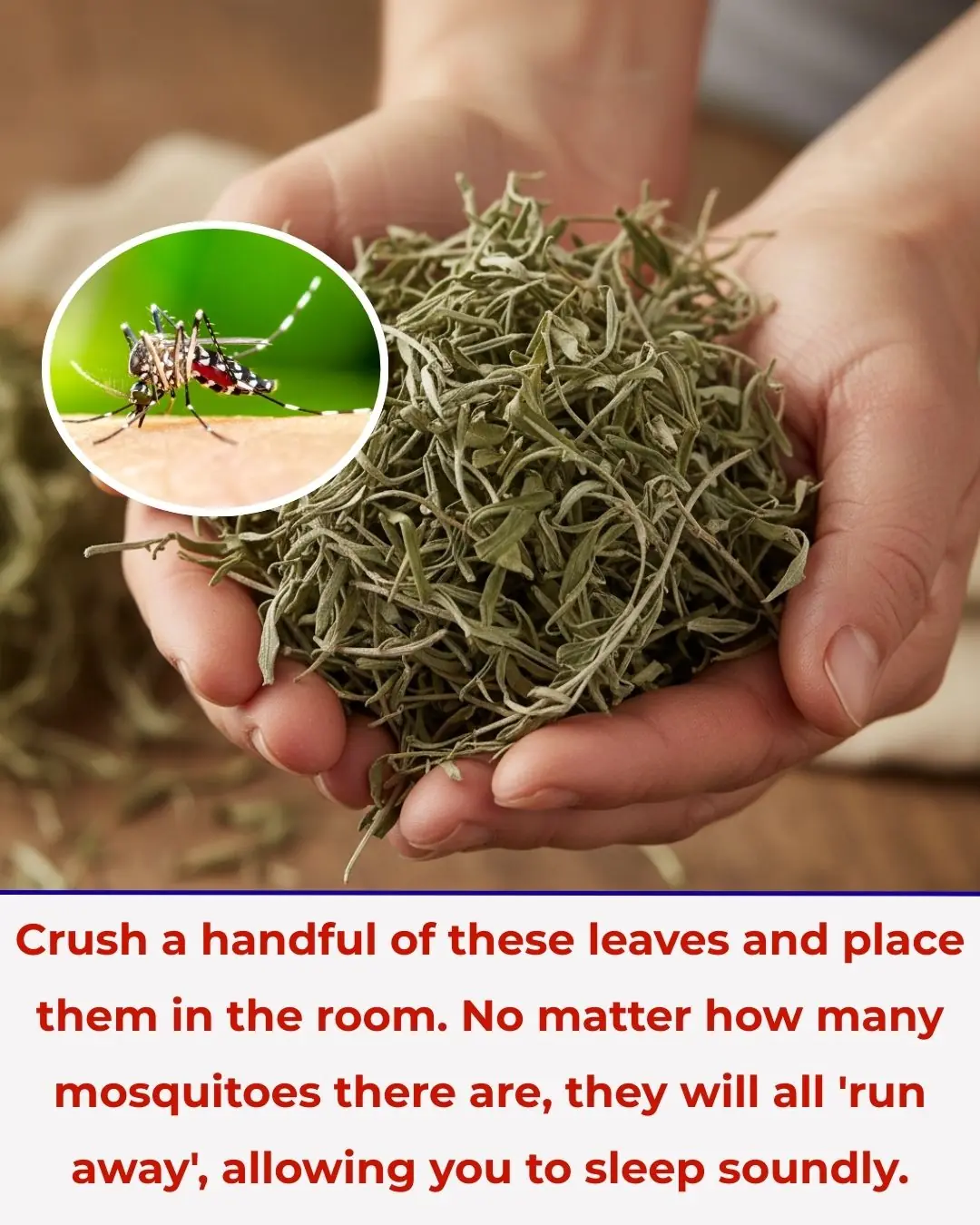
'Miraculous' uses of fig leaves: A precious medicinal plant right in your garden

Fig leaves are often considered an indispensable part in enjoying dishes such as nem tai, nem nam, goi ca, etc. However, few people know that fig leaves also possess many health benefits.
Fig leaves are known as a herb that enhances the flavor of dishes such as nem chua, goi ca and other typical rolls. It has the ability to reduce the feeling of fullness, cut the fishy smell and soften the sour taste in food. However, the uses of fig leaves do not stop there.
What are the uses of fig leaves?
According to Dr. Nguyen Thuy Trang from Vinmec Sao Phuong Dong Traditional Medicine Center, from the perspective of Oriental medicine, fig leaves have nodules, which are more highly valued than regular leaves. It is believed to have the ability to treat liver problems, relieve headaches and is used as a tonic for people recovering from illness...
The blisters on fig leaves are formed by parasitism by P.syllidae; although they have long since left the leaves and no longer leave any eggs or small worms in the nodules when they grow. These nodules only appear on young leaves that develop from new shoots. Therefore, Dr. Trang recommends that if someone wants to enjoy fig leaves, they can confidently choose leaves with nodules to use.
Fig leaves have nodules and are valued more highly than regular leaves.
What are the uses of fig leaves in Oriental medicine? Fig leaves are considered to have a cooling effect, a slightly sweet taste mixed with astringent taste, and are believed to have the ability to support blood circulation, relieve pain, promote urination, reduce inflammation, dissolve phlegm, fight bacteria and nourish the blood. In folk medicine, fig leaves are also used to treat numbness and stimulate milk production.
According to the World Health Organization (WHO), fig leaves can be used as an adjunct in the treatment of diabetes because of their ability to reduce glucose levels. A small-scale study conducted in 1998 showed that active ingredients extracted from fig leaves can help reduce post-meal blood sugar levels in participants, and therefore, the amount of insulin needed for them is also reduced.
Laboratory experiments have shown that fig leaves and latex have the ability to fight the growth of cancer cells, including colon cancer, breast cancer, cervical cancer, and liver cancer in humans. At the same time, fig leaves have also been noted to have a positive effect in improving blood pressure index and reducing lipid levels in the body.
The latex of the fig tree has the ability to fight the growth of cancer cells.
Medicine from fig leaves
In an article, Physician Hoai Vu introduced several methods of using fig leaves to make medicine:
– To stimulate milk secretion: Use 100g of fig leaves (the kind with thorns), one pig's trotter, 50g of young jackfruit, 50g of young papaya, 10g of Chinese clematis core, 5g of coriander seeds and 100g of sticky rice to cook porridge. Eat twice a day, continuously for three days.
– How to treat red lumps that appear on the back and chest with pain and fever: Take 40g of fig leaves, Scrophularia ningpoensis, Blood Horn, and Achyranthes bidentata, each 20g, chop finely and boil to get the water to drink twice a day.
– Treatment of hot liver and jaundice: Use 30g of fig leaves, 30g of Chinese clematis root, 20g of Chinese clematis root, 50g of pennywort, 20g of Chinese clematis root to boil and drink during the day like tea.
Fig leaves are an ingredient in many medicines.
– Method to reduce fever and treat flu: Mix 16g of fig leaves, 16g of lemon leaves, 16g of turmeric, 6g of garlic into a concentrated liquid to drink. If you sweat a lot, drink cold water; otherwise, drink hot water and cover yourself with a blanket to sweat.
– Treatment of sprains and dislocations: Crush fig leaves, Indian almond leaves, Indian laurel leaves, Chinese clematis leaves, and pigweed leaves, mix with alcohol and apply to the painful area.
– For facial acne: Use boiling water from fig leaves to steam and wash your face every day.
Fig leaves are also used as a tonic for people with post-illness weakness, loss of appetite, and insomnia: 200g of fig leaves, along with 100g of Chinese yam, lotus seeds, codonopsis, rehmannia glutinosa, polygonum multiflorum, jujube seed, and mugwort each. Fig leaves are dried in the shade and ground into powder. Chinese yam is cooked, roasted until golden, and ground into powder.
Rehmannia glutinosa is soaked in ginger water, roasted until fragrant and then pounded finely. Fresh mugwort is cooked thoroughly to concentrate the juice. Polygonum multiflorum is soaked in black bean water, roasted thoroughly and ground into powder. Jujube seed is roasted until black and ground into powder. Lotus seeds and codonopsis are dried and ground into powder.
Mix all ingredients with honey to form corn kernel sized pills, then dry. Adults take 18 pills at a time, children take 2-6 pills depending on age, twice a day.
News in the same category


🌿 Wash Your Hair with This Herb and Watch Baby Hairs Grow Back Fast — Say Goodbye to Hair Fall

🪵 Don't Wash Moldy Wooden Cutting Boards with Soap—Try This 5-Minute Natural Cleaning Hack Instead

🌾 Ginger and Rice Water Hair Treatment: A Natural Secret for Fast Growth, Thicker, Shinier Hair

Crush a handful of these leaves and place them in the room. No matter how many mosquitoes there are, they will all 'run away', allowing you to sleep soundly.

Don't rush to throw away the foam, use it for these things to see how useful it is.

Mix beer with sugar or laundry detergent: A great mixture to solve a problem that every household encounters, if you don't know, it's a waste

Mattresses used for a long time are dirty and smelly. Sprinkle this on the surface and it will be clean as new without washing.

The 3 Best Times of the Day to Drink Coffee

Eat these 5 fruits to avoid magnesium deficiency, keep your heart healthy and your bones strong

Drink coconut water on an empty stomach for 7 days, kill 10 birds with one stone: it's a waste not to try it

When cooking rice, don't just add water, add these two things, the grains will be plump, sticky, and clearly more delicious

Dog ticks bit 3 people in a family, 2 died: If you can't keep them clean, don't keep them, they're full of diseases

Drinking lemon ginger water, the body receives these 6 great benefits

The fish that is the "king of omega-3," with salmon only ranking second: Sold everywhere in Vietnamese markets at incredibly low prices.

Tips for using rice water and ginger to nourish your hair, promoting faster growth and making it thicker, darker, and shinier.

Treat premature gray hair with a black dye formula made from sour starfruit and potatoes, as cheap as can be!

How to store chili peppers for months while keeping them as fresh as the day they were picked, with firm, plump flesh that doesn’t dry out or lose flavor.

10 people eat avocado, but 9 of them discard this part without realizing it's a "treasure."
News Post

Game-changing 'hidden' features in iOS 26 update you've probably missed

X-rays Reveal Hundreds of Golden Threads Inside a Patient with Severe Knee Pain — Here’s the Reason Why

Blind Man Can Now See Through His Tooth After Losing Sight 20 Years Ago – He Explains How It Works

Harvard expert issues chilling warning that strange object heading towards Earth may be a ‘mothership'

Nvidia's futuristic 'robot brain' officially goes on sale to the public for insane price

These 4 places are "bacteria nests" in the rice cooker, need to be cleaned every month

🌿 Wash Your Hair with This Herb and Watch Baby Hairs Grow Back Fast — Say Goodbye to Hair Fall

🪵 Don't Wash Moldy Wooden Cutting Boards with Soap—Try This 5-Minute Natural Cleaning Hack Instead

🌾 Ginger and Rice Water Hair Treatment: A Natural Secret for Fast Growth, Thicker, Shinier Hair

Colgate Toothpaste for Face Whitening: The Secret Combo of Tomato and Colgate 🍅✨

Emotional Starbucks Employee Reaction Over Long-Hour Shift Sparks Debate

Shocking Discovery at Her Son’s Bed Leaves Mom Terrified

If You Have These Two ‘Dimples’ on Your Lower Back, This is What They Mean

How My Nana’s Baking Soda Skincare Routine Became My Favorite Beauty Secret

Popular Drink Could Be Permanently Staining Your Teeth Yellow, Experts Say

Powerful Natural Remedies for Ear Infections That You Can Try at Home

CRISPR Breakthrough: Scientists Achieve Complete HIV Eradication in Lab Cells

Northern lights alert : the best displays in years could be coming

The Science Behind the Blood Moon: How Earth’s Shadow Creates the Red Glow
